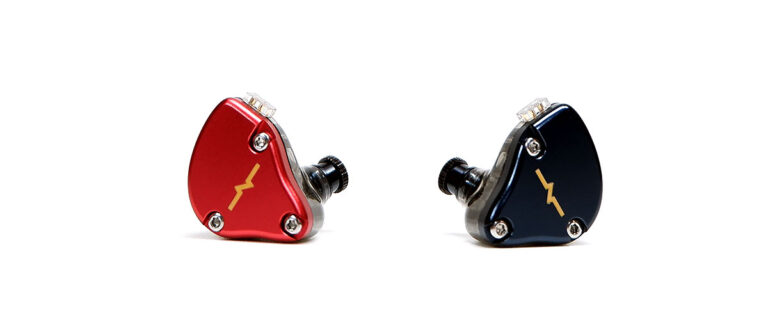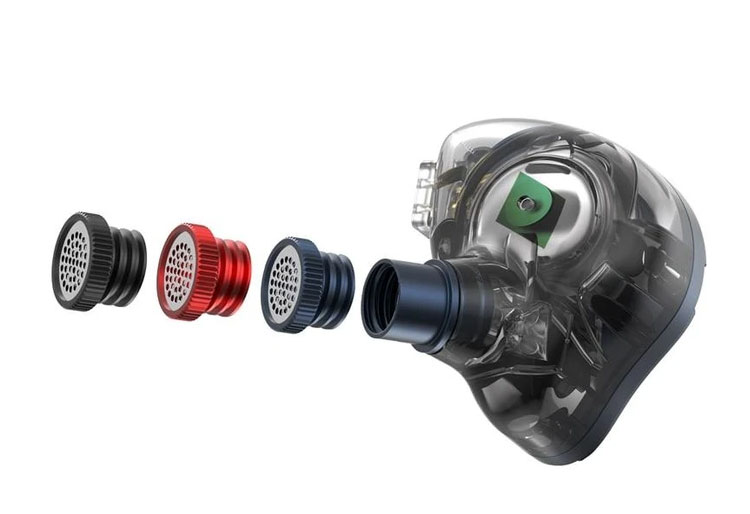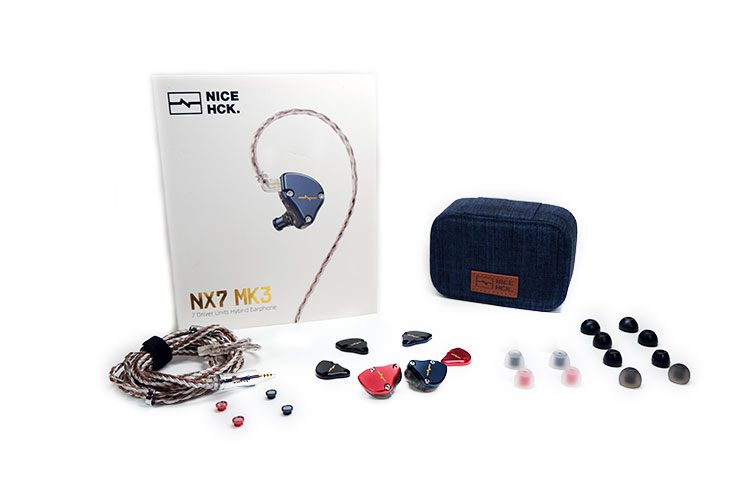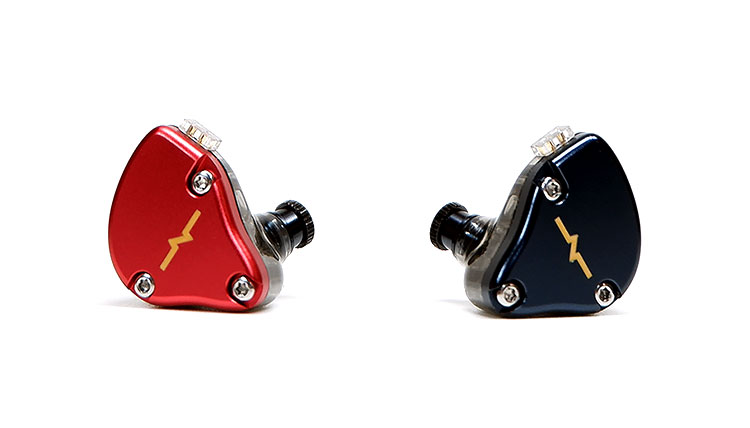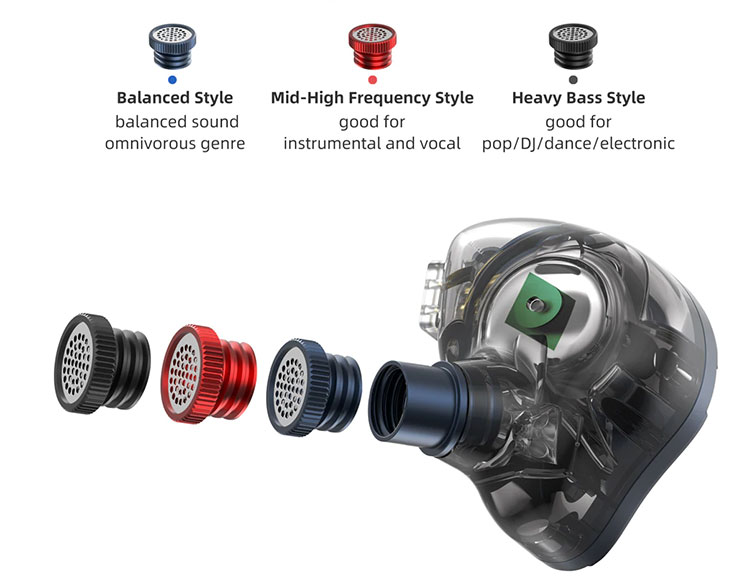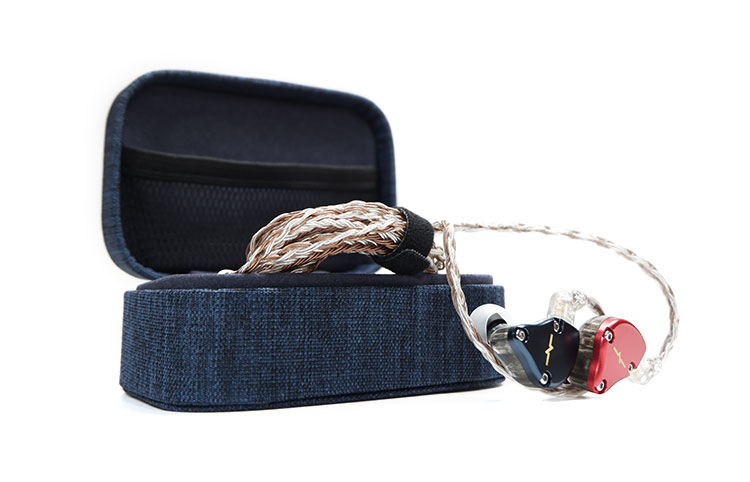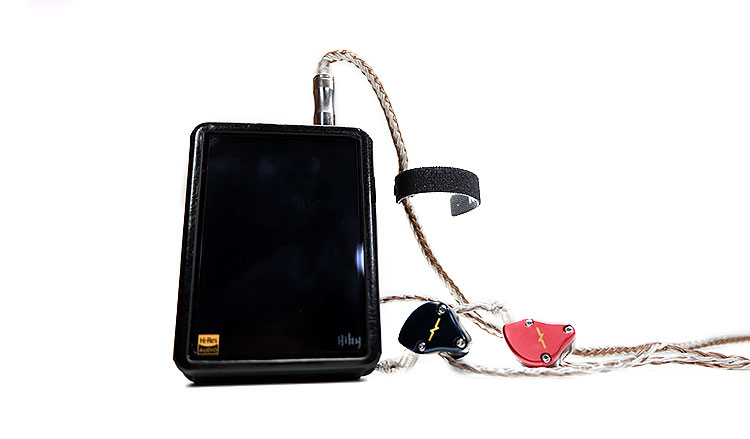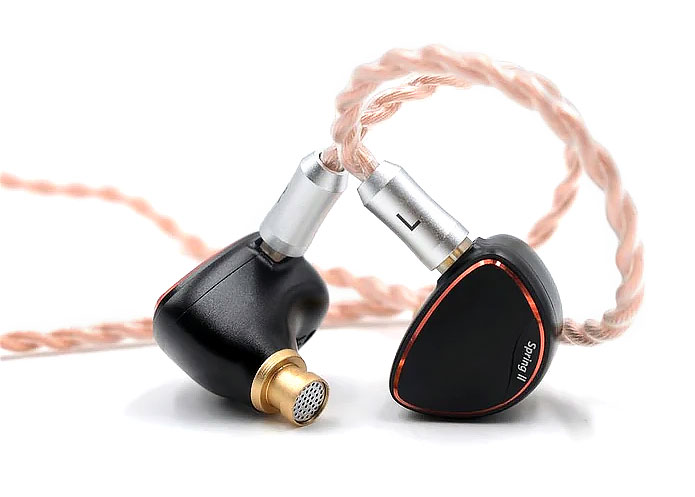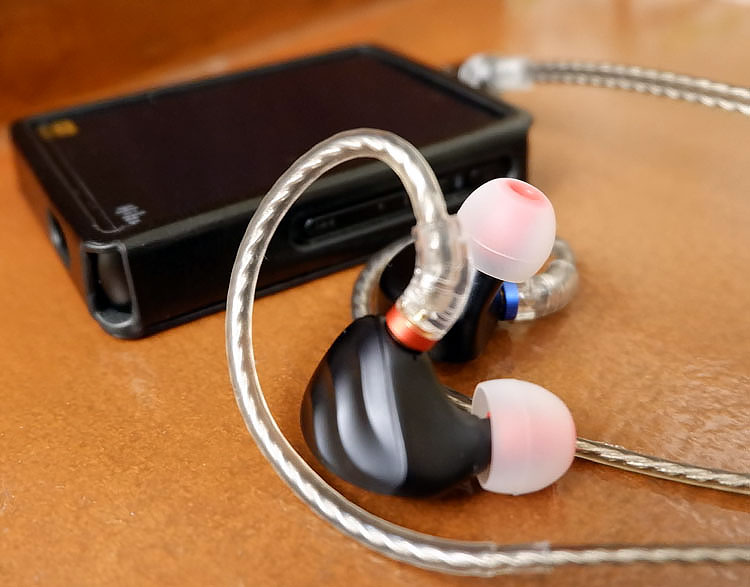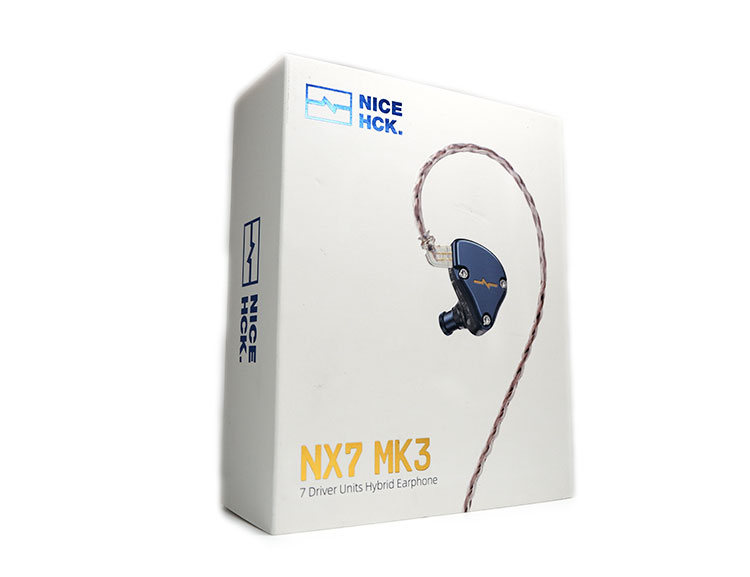The NICEHCK NX7 MK3 is a 7 driver tribrid driver universal IEM consisting of 2 dynamic, 4BA, and a single piezoelectric driver. It is priced at $135.
Disclaimer: The NICEHCK NX7 MK3 sent to us is a sample in exchange for our honest opinion in this review. We thank HiFiGo for this opportunity.
To learn more about our hybrid IEM reviews on Headfonics you can click here.
Note, this review follows our new scoring guidelines for 2021 which you can read up on here.
NICEHCK is a retailer of IEMs, headphone amplifiers, and DACs from China. They have since ventured into creating their own brand of IEMs, and in 2019, they released the first version of the NX7. Although I was not able to listen to them personally, I’ve read that the NX7 Pro was a significant improvement over the original.
The 2 older NX7 models are received with mixed reviews, but just recently, NICEHCK decided to release the 3rd iteration for the NX7 with the NX7 MK3. With the improvements that they have been constantly implementing, maybe 3rd times’ the charm?
Tech Inside
Configuration
You get a lot of drivers here for your money but importantly you get a configuration of specific types of drivers often seen in more expensive models. This includes 4 BA drivers, a 10mm composite dual CNT dynamic driver, and a piezoelectric driver.
The dynamic drivers are tuned to handle the bass, and the lower midrange, while the BA drivers are tuned to handle the midrange up to the lower treble, while the piezoelectric drivers are tuned to handle the higher frequencies.
Tuning Filters
One of the most unique features that the NX7 MK3 has is that it comes with 3 unique tuning filters. These tuning filters can modify the frequency response of the NX7, and it can be a viable alternative to ear tip rolling.
Interchangeable Faceplates
Aside from customizing the filters, the NX7 MK3 also has replaceable faceplates. 2 extra pairs of faceplates are included, to give the client an option to change the color of the IEMs. NICEHCK included a 16 core silver-plated copper cable with the NX7 MK3 which is terminated with a 0.78mm 2-pin connector.
Options
Upon ordering, the included cable can be customized according to the need of the customer. The options include the standard single-ended connection terminated in a 3.5mm TRS connection, or a balanced connection terminated in 2.5mm, 4.4mm, or 3.5mm TRRS connection.
It seems that NICEHCK has given the user great customization options at every turn, and finding the perfect configuration of the NX7 MK3 will not be that difficult.
Packaging & Accessories
The NX7 MK3 comes in a white box with a printed sleeve, where the picture of the headphone is in front. The packaging looks good, but most importantly, the box is hard, and it has a sufficient amount of foam and cardboard inserts that ensure the safety of the IEM and related accessories during transportation and storage.
In terms of the number of accessories that come with the NX7 MK3, this is the most that I’ve seen with a pair of IEMs. There’s the IEMs themselves, the cable, an extra 2 pairs of tuning filters, a carrying case, 2 pairs of faceplates, 2 sets of ear tips in different sizes, and a screwdriver.
It’s obvious that NICEHCK is being generous when it comes to the accessories, and they don’t seem to have scrimped on the quality either. Their carrying case is even made of denim to make it fashionable to carry around.
All these accessories and the box shows that NICEHCK wants to ensure that they ship out a very complete and secure product.
Design
Typically, we are made to choose the color of the IEM that we want before we buy it. This time NICEHCK decided to let us choose the color of the IEM via the faceplate with 3 variations in the box. With the included faceplates, the user can easily switch from the default blue faceplate to the red or the black faceplate depending on their mood.
While this is an interesting concept, I would have wanted to see some color coding of the IEM shells, so that it would be easier to spot which one to put into which ear. But then again, it will just be a matter of replacing the right IEM faceplate with the red faceplate, and the NX7 MK3 now has color coding!
Stock Cable
Each IEM shell has a protruding stem that reduces the stress on the 0.78mm 2-pin connectors when the cable moves around. The cable itself has a preformed loop that doesn’t need much of an adjustment when being worn.
Each strand of the 16-core silver-plated copper cable is braided tightly and intricately so that it doesn’t seem to tend to unravel at any point. The 2.5mm TRRS connector that came with my review unit is made of metal, which gives me a feeling of assurance that the connector will last for quite a while.
Comfort & Isolation
One thing that bothers me about comfort is that the faceplates on the NX7 MK3 have some harder edges around the screws. They seem to dig into my concha if I were to lie down or lean my ears against a headrest. It won’t bother you if you don’t use the IEMs while lying on your bed though.
When I wear IEMs, I tend to feel some discomfort after a few hours because of some fit issues in the shells themselves or the size of the nozzle. With the lightweight plastic shells of the NX7 MK3, I never felt that there was an issue with the size of the nozzle or any part of the IEM exerting pressure on my concha.
The cables are also appropriately weighted so that it won’t drag down the IEMs when being worn. They are also soft enough that they don’t introduce any microphonics.
Filters
The filters that come with the NX7 MK3 slightly changes the sensitivity level of the NX7 MK3, with the red filter having the highest sensitivity level of 108dB/mW, the blue filter at 107dB/mW, and the black filter at 103dB/mW. These changes are brought about by the frequencies that may be impeded by the filters.
The red filter is designed to emphasize the treble and the mid-range, and it does. The lower treble was slightly more emphasized, to the point that it seems to overshadow the rest of the frequencies.
The black filter on the other hand is designed to emphasize the bass frequencies, and it does so slightly. Of course, elevating the bass comes at the cost of having a more closed-in feeling and a more subdued treble.
The one that was attached when I opened the box is the blue filters. They are tuned to be balanced filters, and they are much more balanced than the other 2. The tonal balance on the blue filters is a bit more neutral, simply allowing the music to just emphasize whatever it’s meant to emphasize.
I can see why anyone would want to use any of the filters depending on the genre of music that they would listen to.
Sound Impressions
Bass
The amount of bass that the NX7 MK3 produces can easily be modified by using the tuning nozzles and various available ear tips. I ended up using the black bass filter, with the larger bore ear tip, and this combination gave the NX7 MK3 a good amount of bass and a decent amount of sub-bass extension.
An added benefit of using the black bass filter and the wide bore ear tip is that the NX7 MK3 has a touch more clarity. The overall bass presentation is clear and articulate. Although each drum hit has an immediate attack, the NX7 MK3 just makes the drums sound a bit hollow.
The upper bass though has a slight emphasis, but I can see why this might end up being more enjoyable for some as it adds quite a bit more punch when it comes to percussive strikes. Sub-bass on the other hand has a good amount of presence, but it just lacks a bit of that ethereal encompassing sub-bass quality that can be heard in recording with good sub-bass.
Midrange
The vocal range on the NX7 MK3 is clear, but not particularly emphasized. Despite that, the vocals still come across as clean and well textured. Both male and female vocals are done well, and the timbre isn’t bothersome, but I’ve heard more accurate vocal presentation elsewhere.
Playing guitar tracks from Sungha Jung, the guitar tracks came across as very accurate and detailed. The shifting of the fingers on the fretboard of the guitar is easy to pick out. Details like the way the strings are plucked are also very accurate. Most importantly, the guitars being played through the NX7 MK3 has a natural timbre.
Treble
Large bore tips are usually used to boost up the treble, and using it in conjunction with the bass nozzle made the treble very clear. This is where the benefit of interchangeable nozzles are evident. The treble region is kept at bay in terms of quantity.
It’s typical of gear on the more economical end of the spectrum that the treble will be boosted to show a false sense of clarity and detail. The downside though, is that the treble may sometimes become sibilant as a side effect. The NX7 MK3 though did not need to employ such methods to present a good amount of treble detail. It remains clear, but never sibilant.
Staging
The NX7 MK3 plays wide, and I’m quite impressed at how wide the sound feels on the NX7 MK3. However, throughout most of the song, it will remain wide.
Listening to Amber Rubarth’s Strive, the violins sound distant in the start, but the distance varies throughout the whole song. This is less noticeable with the NX7 MK3 though, as the distance of the violin varies within a smaller range than I expected.
The center image that’s created by the NX7 MK3 is also a bit of a let down since it ends up being inside my head. A good center image in front of my head would have been much more preferable. Directionality is quite accurate, but the NX7 MK3 has a difficult time presenting the layers and depth within the soundstage.
Synergy
With an impedance of 58Ω and a sensitivity of around 107dB/mW, driving the NX7 MK3 off of my phone is a bit difficult. I ended up having to almost max out my phone, and even then the NX7 doesn’t really sound right.
The bass sounds slightly lethargic, and the dynamics are just not as impactful. Although it’s possible to make the sound come out of the NX7 MK3 using my Xiaomi Redmi Note 9 Pro, the combination is far from ideal.
Using the provided 2.5mm TRRS terminated cable, I connected the NX7 MK3 to my Hiby R3 Pro, and it was a world of difference. Although I had to push the R3 Pro to about 55% on the balanced connection, the R3 Pro had plenty of power left over to make the NX7 MK3 sound much more dynamic and open.
Although the NX7 MK3 can be driven off of a phone, it would be too much of a compromise to do so.
Ear tip rolling
Tip rolling on the NX7 MK3 is quite a different experience because tuning can already be done using the nozzle filters. However, tip rolling would still make a difference once your preferred nozzle has already been chosen.
If I’m using the blue neutral nozzle, I tend to use a bassier ear tip, so one with smaller bores would be ideal. However, when I’m using the black nozzle, I tend to lean towards the wider bore ear tips to slightly elevate the treble.
Between the 2 combinations though, I ended up preferring the black nozzle paired with a wider bore ear tip. This combination just made the NX7 MK3 a bit airier, while still retaining that dynamic bass punch. So for most of the sound portion, I used the black nozzle tips with the wide bore ear tips.
Tip rolling on the NX7 MK3 is a bit of a different experience when compared to other IEMs. There are more combinations that can fine-tune the sound to find the exact sound signature that you would prefer. I believe this is one of the biggest advantages of the NX7 MK3 over most of its competition.
Select Comparisons
BQEYZ Spring 2
Technical
The BQEYZ Spring 2 retails for around the same price as the NX7 MK3, and they also both have 3 types of drivers inside. The biggest difference is that the NX7 MK3 has 2 dynamic drivers instead of 1, and the NX7 MK3 also features 4 BA drivers instead of just one on the Spring 2, however, both of them have a piezoelectric driver handling the ultra-high frequencies.
While they have a similar driver configuration, the package and accessories are rather different. The NX7 MK3 has a few extra accessories for customization, and the carrying case that comes with the NX Mk7 seems less generic than the plain black carrying case with a silkscreened logo in front that came with the Spring 2.
The cable that came with the 2 IEMs is comparable, with both being braided well. The Spring 2 came with a thicker pure copper braided cable, while the NX7 MK3 came with a 2-tone cable that is equally well made.
They both terminate with a 0.78mm connection to the IEM, but the one on the NX7 MK3 has a standoff that will have better strain relief on the 2-pin connection. Also worth noting is that the NX7 MK3 has customization options when it comes to the source connector, while the Spring 2 only comes in a 3.5mm TRS single-ended connection.
Both the Spring 2 and the NX7 MK3 have a similar configuration in terms of which type of driver will generate which range of frequencies. Where the Dynamic drivers take care of the bass region, the BA drivers will take care of the midrange and the lower treble, while the Piezoelectric drivers generate the upper treble region.
Performance
In terms of bass, the NX7 MK3 has a slightly punchier bass presentation maybe because of the slight mid-bass hump in the NX7 MK3. While the quantity might be about the same, the Spring 2 sounds a bit more lethargic comparatively.
Vocals are a bit more recessed with the NX7 MK3, and when the NX7 MK3’s midrange is compared to the Spring 2’s, the Spring 2 can present vocals to have a more ethereal quality.
Midrange instrument presentation is a bit different though, as guitars and piano notes have a more natural timbre to them compared to the Spring 2’s thinner presentation. Despite being forward, the treble on the NX7 MK3 is a bit smoother compared to the presentation of the Spring 2.
When it comes to soundstage, the Spring 2 feels quite a bit more intimate. However, the center image created by the Spring 2 is pushed a bit more forward making the soundstage feel more natural on the Spring 2, even if it’s a lot more intimate.
When it comes to creating an image though, the Spring 2 creates a slightly larger image. Where drums don’t sound small, but I think this is also a byproduct of the soundstage being more intimate in the Spring 2.
The Spring 2 and the NX7 MK3 might employ similar technologies, but they did different things with the same technology. With the NX7 MK3’s more customizable options though, it may just appeal to a wider audience.
FiiO FH3
Technical
The FH3 retails at a more modest $130, but the NX7 MK3 does occasionally go on sale for around the same ballpark. In terms of driver count though, the FH3 seems to fall behind quite a bit, with just 3 drivers, 1 Dynamic driver, and 2 BA drivers, against the NX7 MK3’s 7 driver configuration.
This might sound unfair, but having more drivers requires more engineering work to make all the drivers play together nicely.
FiiO has been aggressive about the packaging and accessories that come with their IEMs, and the FH3 is no exception. Although FiiO couldn’t match the customization options that are available in the NX7 MK3, the FH3 has a clear acrylic hardshell case that’s something to rave about at this price point.
The FH3 also has an MMCX connection, instead of the NX7 MK3’s 0.78mm 2-pin connection. But both connectors seem equally reliable since the 0.78mm 2-pin connection on the NX7 MK3 has good strain relief on the 2-pins.
By replacing the faceplates on the NX7 MK3, both these IEMs have clear color coding, so figuring out which one would go to which ear is equally convenient on both. It’s worth noting though that the cable on the FH3 is a bit stiffer since it has a coating that makes it less prone to getting tangled.
Performance
Tonally, the FH3 has a touch more bass with about the same amount of punch as the NX7 MK3. The midrange on the other hand has a more natural timbre, especially in the vocal range. The Treble is about the same, where neither IEM needed to emphasize the treble region to sound detailed.
In terms of soundstage, the FH3 is quite a bit more intimate than the NX7 MK3, however, the tightness of the image that the FH3 creates makes up for the smaller soundstage. The center image on the FH3 also feels more natural as it’s pushed a bit more forward. The image created by the FH3 is larger while not feeling more scattered.
While the FiiO FH3 feels like a more mature offering from a more mature company. However, the NX7 MK3 has enough customization options to make sure that you get the product you want from the NX7 MK3.
Our Verdict
With Nice HCK’s 3rd iteration of the NX7, I believe 3rd time’s the charm for them. While the NX7 MK3 still has some rough edges, both on the faceplate as well as in terms of the soundstage, it’s still an overall solid offering.
Having multiple customization options might sound like a gimmick to some, but the options that were provided with the NX7 MK3 are very functional and they make the NX7 MK3 a versatile product that can be tuned to conform to your preference.
NICEHCK NX7 MK3 Technical Specifications
- 4 BA units + 2 CNT Units+ 1 Piezo-electric Ceramics Driver.
- Replaceable face panels, Included in three different colors Red, Black, Blue.
- Replaceable tuning filters.
- Universal 0.78mm 2-Pin connectors.
- Impedance: 58Ω.
- Sensitivity(Blue Filter): 107dB/mW.
- Sensitivity(Red Filter): 108dB/mW.
- Sensitivity(Black Filter): 104dB/mW.
- 16-Core Copper & SPC Mixed Cable.

